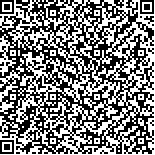吴月峰,董晓琼,朱童,等.双任务训练对脑卒中患者异常步态和跌倒风险的影响[J].中华物理医学与康复杂志,2025,47(8):704-709
扫码阅读全文

|
| 双任务训练对脑卒中患者异常步态和跌倒风险的影响 |
|
| |
| DOI:10.3760/cma.j.cn421666-20230919-00752 |
| 中文关键词: 脑卒中 偏瘫 双任务训练 步态分析 跌倒风险 |
| 英文关键词: Stroke Hemiplegia Dual-task training Gait analysis Fall risk |
| 基金项目:浙江省基础公益项目(LGF20H250002);绍兴市基础公益项目(2024A14046);浙江省康复医学会科研专项基金项目(ZKKY2024016) |
|
| 摘要点击次数: 785 |
| 全文下载次数: 699 |
| 中文摘要: |
| 目的 观察双任务训练对脑卒中后偏瘫患者的异常步态和跌倒风险的影响。 方法 选取符合标准的脑卒中患者90例,按随机数字表法将其分为对照组、认知双任务组和运动双任务组,每组患者30例。3组患者均接受针对脑卒中后的常规药物和康复训练,认知双任务组患者在常规康复训练中的步行训练的同时进行认知双任务训练,运动双任务组患者则在常规康复训练中的步行训练的同时进行运动双任务训练。3组患者均在治疗前和治疗后4周采用Berg平衡量表(BBS)、“起立-行走”计时试验 (TUGT)、Fugl-Meyer运动功能评定量表下肢部分(FMA-LE)分别评估3组患者的平衡功能、步行功能和下肢运动功能,同时对3组患者进行三维步态分析,采集3组患者治疗前、后的步速、双侧空间差异率(BSDR)、双侧时间差异率(BTDR)和步速的双任务干扰率(DTC)。采用SPSS 21.0版统计学软件对所得数据进行统计学分析。 结果 治疗后,3组患者的BBS评分、TUGT、FMA-LE评分、步速、步速DTC、BSDR和BTDR较组内治疗前均显著改善,差异均有统计学意义(P<0.05);认知双任务组患者治疗后BBS评分、TUGT、FMA-LE评分、步速、步速DTC、BSDR和BTDR,均显著优于对照组治疗后,差异均有统计学意义(P<0.05);且运动双任务组患者治疗后的BBS评分、TUGT、步速、步速DTC、BSDR分别为(42.67±7.87)分、(22.30±8.53)s、(0.58±0.2)m/s、(19.02±5.99)%、(19.79±10.41)%,均显著优于对照组治疗后,差异均有统计学意义(P<0.05)。认知双任务组治疗后的BBS评分、TUGT、FMA-LE评分、步速、步速DTC、BSDR和BTDR与运动双任务组患者治疗后比较,差异均无统计学意义(P>0.05)。 结论 双任务训练可显著改善脑卒中患者的平衡、步行和下肢运动功能,矫正其异常的步态,进而降低其跌倒风险。 |
| 英文摘要: |
| Objective To observe any effect of dual-task training on abnormal gait and fall risk among hemiplegic stroke survivors. Methods A total of 90 stroke survivors were randomly divided into a control group, a cognitive dual-task group, and a motor dual-task group, each of 30. All 3 groups received conventional post-stroke medication and rehabilitation training, but the cognitive and motor dual-task groups received cognitive or motor dual-task training as well. Before and after 4 weeks of the training, everyone′s balance, walking and lower limb motor functioning were assessed using the Berg Balance Scale (BBS), the Timed Up and Go test (TUGT) and the Fugl-Meyer lower extremity assessment (FMA-LE). Additionally, three-dimensional gait analysis was performed to document gait speed, bilateral spatial asymmetry, bilateral temporal asymmetry, and the dual-task cost (DTC) of gait speed. Results Significant improvement was observed in the average BBS scores, TUGT times, FMA-LE scores, gait speed, DTC of gait speed, bilateral spatial asymmetry ratios, and bilateral temporal asymmetry ratios of all 3 groups after the experiment. The averages of the cognitive dual-task group were then significantly better than the control group′s averages. The motor dual-task group′s average BBS score (42.67±7.87), TUGT time [(22.30±8.53)s], gait speed (0.58±0.2m/s), DTC of gait speed (19.02±5.99%), and bilateral spatial asymmetry ratio (19.79±10.41%) were then significantly better than the control group′s averages but not significantly different from those of the cognitive dual-task group. Conclusions Dual-task training can significantly improve the balance, walking and lower limb motor function of stroke survivors, correcting their abnormal gait patterns and consequently reducing their fall risks. |
|
查看全文
查看/发表评论 下载PDF阅读器 |
| 关闭 |
|
|
|